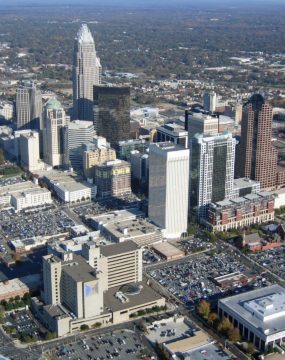Welcome to our blog
Keep up with our latest demographic insights

Population can grow—or decline—from one of two components of change: net migration (both domestic and international) or natural growth (births and deaths). Both components have contributed to North Carolina’s population growth. Every year since 1980, North Carolina has had more births than deaths, meaning the population has grown from natural increase. The level of natural increase peaked in the late 2000s and has since declined significantly, reflecting the combined impact of fertility declines and population…

Despite substantial growth in some areas of the state, a large portion of North Carolina has seen little to no population increase. Of North Carolina’s 553 municipalities, 225, or about 41%, experienced population decline from 2010-2016. An additional 192 reported growth that was lower than 6.4%, the state’s growth rate since 2010. In total, three of every four North Carolina municipalities have lost population or grown slower than the state since 2010. The northeast corridor…

North Carolina’s population, much like the nation at large, is growing older and more diverse. The new 2016 detailed population estimates from the U.S. Census Bureau provide data on the age, sex, and racial/ethnic composition of state and county populations. In North Carolina, the 65 and older population grew from 1.2 million in 2010 to 1.6 million in 2016, an increase of 335,000 or 27%. As of 2016, 15.5% of North Carolina’s population was 65…

The U.S. Census Bureau recently made its 2016 population estimates available, and the topline trends for North Carolina has maintained a nearly identical trajectory as 2015. Since the last decennial Census in 2010, North Carolina has seen its urban metropolitan areas grow consistently larger, while small, often rural municipalities have struggled to maintain population. North Carolina’s two largest metropolitan statistical areas – Charlotte-Concord and the Triangle (Raleigh-Durham-Chapel Hill) – have driven much of North Carolina’s…
Net migration has been a major driver of North Carolina’s growth since 1990 and its importance will only increase in coming years. The only other potential source of growth is natural increase—births minus deaths—and this has been declining since the recession. In my recent post, I noted that even if fertility rates increase significantly, we should not expect natural increase to rebound to prior levels, largely due to the growing impacts of population aging. Although…
North Carolina’s population grew by 112,000 between 2015 and 2016, the largest single year increase since 2010, according to new data from the U.S. Census Bureau. With a growth rate of 1.1%, North Carolina’s 2015-16 growth was faster than the national growth rate (0.7%) and similar to the South’s regional rate (1.1%). Overall, North Carolina’s population has grown by 611,000 since 2010, an increase of 6.4%. The uptick in population growth was fueled by an…
In addition to counting basic demographic characteristics of 309 million Americans, the 2010 decennial census also included information on the last names about 295 million individuals – more than 95% of all Americans. Summaries of these data were made publicly available today. Some highlights: Americans reported 6.3 million individual surnames in 2010. Most of these—3.9 million or 62%--were reported only once. Why? Lots of unique surnames or unique variations of more common names. There were…
After the Great Recession, the volume of Mexican immigration to the United States—and North Carolina—dropped sharply. Between 2009 and 2014, the Pew Hispanic Center found that more Mexican immigrants had returned to Mexico than immigrated to the U.S., with an estimated net migration of -140,000 individuals. During this same time period, Asian countries, such as China and India, emerged as leading senders of immigrants. Similar trends were documented in North Carolina. New data from the…
Over half (54%) of North Carolina’s voting-eligible (18+ citizen) population is North Carolina born, according to estimates from the 2014 American Community Survey. This is slightly below the national proportion of 56% of eligible voters born in their current state of residence. Louisiana has the highest proportion of state native potential voters at 77% while Nevada has by far the lowest rate. Just 14% of Nevada’s voting-eligible residents were born in Nevada. As individuals moved…
North Carolina’s population is rapidly diversifying. Since 2000, the state’s Asian population has more than doubled, increasing from 114,000 to 268,000, a growth rate of 136%. The Hispanic population has grown at a similar pace, with even more significant numeric increases. In 2000, North Carolina had 379,000 Hispanic residents. By 2015, the Hispanic population was nearly 912,000, an increase of more than half a million or 141% over fifteen years. This diversity is not fully…
Your support is critical to our mission of measuring, understanding, and predicting population change and its impact. Donate to Carolina Demography today.